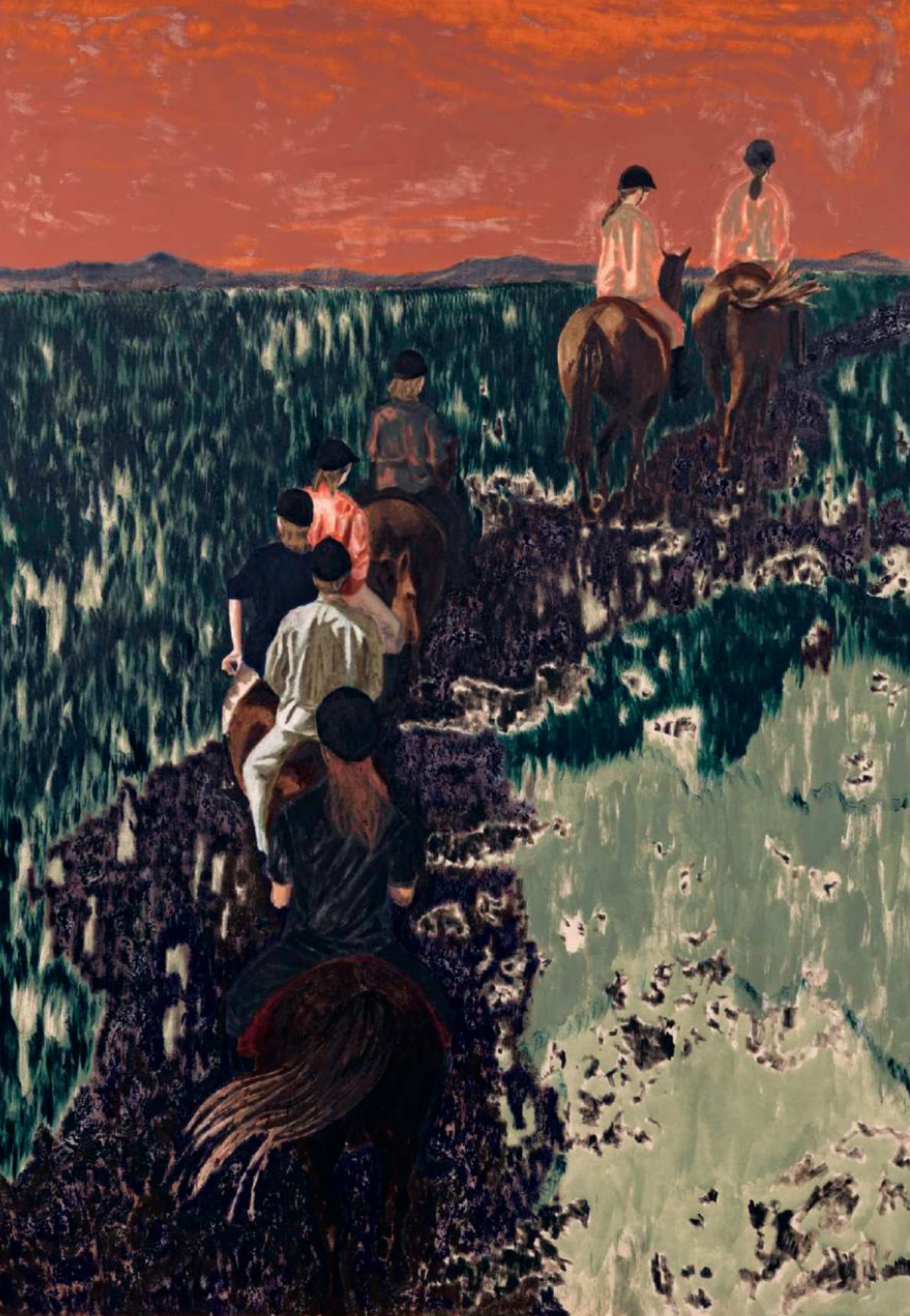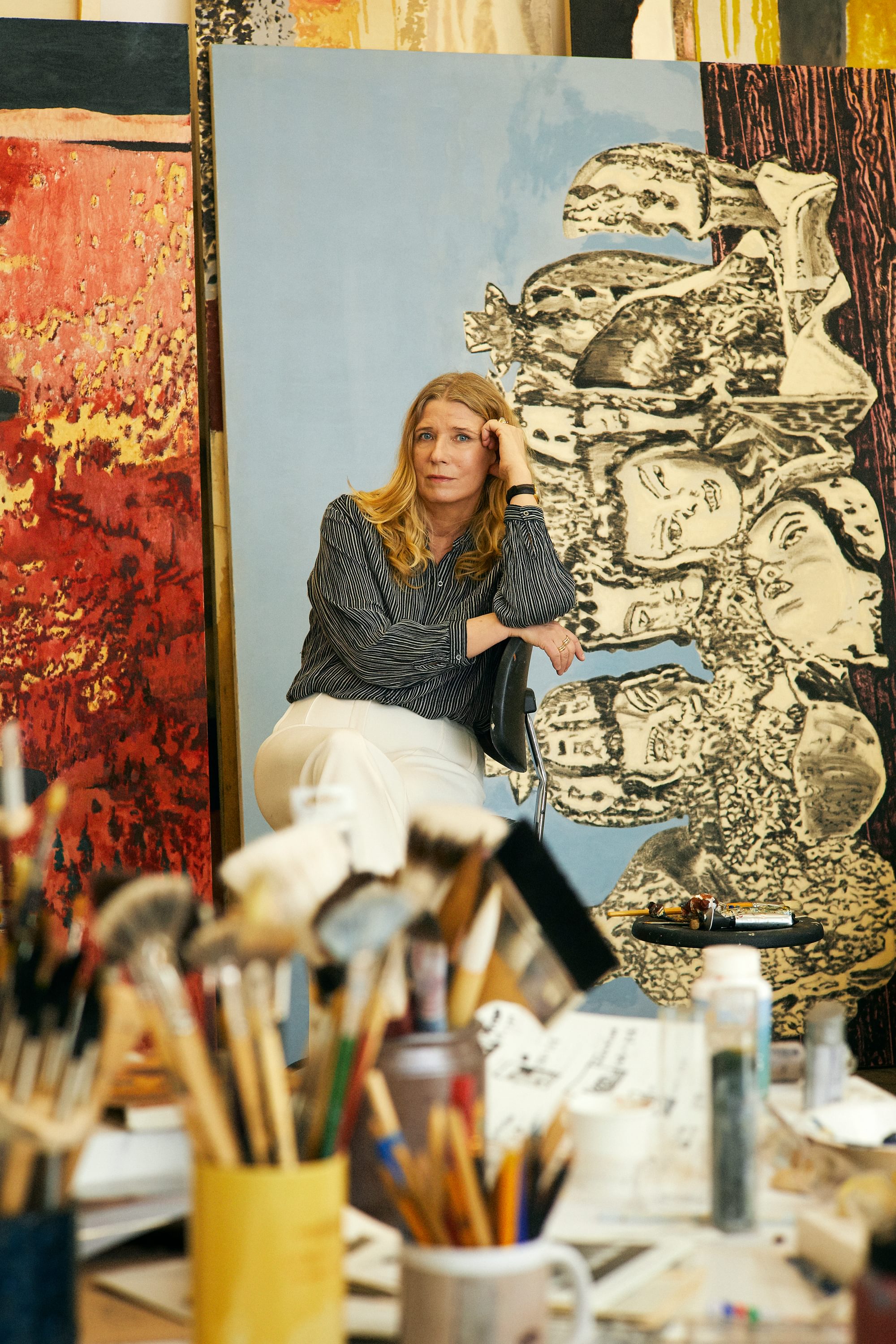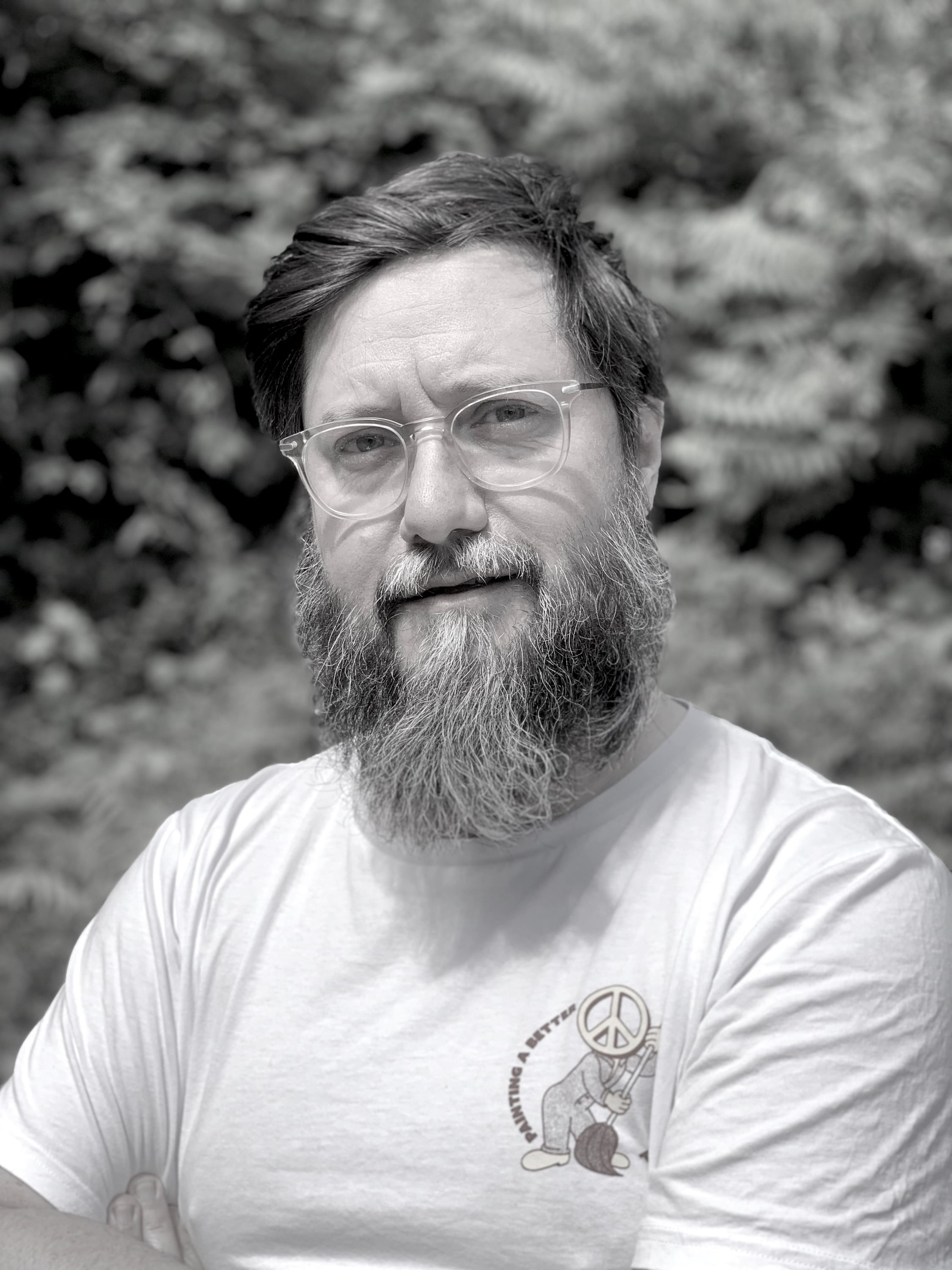
Mamma Andersson, Holiday, 2020, oil and acrylic on canvas, 200 x 140 cm. Photo by Per-Erik Adamsson. Courtesy the artist and David Zwirner, Stephen Friedman Gallery and Galleri Magnus Karlsson.
Some painters are great image makers but terrible painters. This is probably an unpopular opinion, but I see David Hockney like this. His show at Tate was so disappointing. The paintings reproduce better than they look in real life. The surface is dead, barren. You do both: you make strong, graphic images and keep the surface dynamic, active, engaging. How much do you think about this balance? Does the image ever get sacrificed to the paint? Or vice versa?
The older I get, the more interested I seem to get in the surface itself. But I've probably always been. Over the past few years, I have increasingly switched to painting on stretched canvas and changed the brush to a kind of chalk. I want to move away from realism and try to find my own reality. Painting has a long and complicated history. Visions have changed over time, as have style and ideals. If you see it scratched, then painting is mere pigment on a flat surface. This ceases all general rules: the air is free, and you can do what you want or can do. I perceive painting a bit like magic. For my part, I have always thought that the painterly technology itself—the material executions—is at least 50% of the work. The rest is something else. From the beginning of a work, I have a clear idea, although it almost always changes as I work. Sometimes more, sometimes less … Especially if I work on a painting for a long time—then it can completely change shape.
What does subject matter, or the content of a painting, have to do with the painting's meaning? Are they connected?
A good idea can do just as well as an image that is only based on colour and material, but then it really requires magic. The finest thing is if the idea and the execution follow each other. For many years, I have found research material in magazines, books, film stills, various archives such as theater scenographies, and crime scenes. I have been addicted to finding images that give a certain mood which I then subsequently steer in different directions. So, in a way, it is still there, but a bit hazy and weird/skewed. The goal is to convey a feeling that points in a certain direction. It can be difficult to communicate through a single painting, but several paintings together can sometimes define this intention very well. As a result, I usually work in whole exhibitions. I'm looking for a story without beginning and end.
“I perceive painting a bit like magic”
How do images / ideas translate across media from drawing to painting to printmaking? I associate your paintings as creating worlds within worlds, kind of portals to other dimensions. The prints you have made recently with Edition Copenhagen, (Munk, Serval) and Borch (Hålrum, Cupido, Det förlorade paradiset) tend to focus on singular objects. Is this coincidental, a matter of timing, or a choice based on the medium?
The big difference in working with painting versus in a graphic workshop is that in a studio I am always alone—in a workshop there are many others. That is not to say that one is better, it is just different conditions. In the graphic workshop you are usually restricted on time, and the technology also limits me. That makes the images soloists, not an ensemble. For example, at Edition Copenhagen, you work mostly with stone. Lithography is a peculiar technique where you always have to be many steps ahead: you print the entire edition color by color, if you undo a color choice you made early in the process, it is not possible to reverse. On the other hand, I really love this knife-on-the-throat method, quick pucks. At Niels Borch Jensen Gallery & Editions, the slowness is evident and the process is open to change at all times. There, I work with woodcuts that involve carving in a wooden block at various depths, or alternatively, carving in a copper plates that are later placed in acid baths. This is a very simplified description. There is automatically a certain difference in expressions when you change techniques, whether you like it or not.

Mamma Andersson (b. 1962, SE) lives and works in Stockholm. Inspired by filmic imagery, theatre sets, and domestic interiors, Mamma Andersson‘s compositions are often dreamlike and expressive. Her subject matter revolves around melancholic, quiet landscapes and nondescript, private interiors. Work by the artist is represented in museum collections that include MOCA — The Museum of Contemporary Art, Los Angeles (US), MoMA — Museum of Modern Art (US), Dallas Museum of Art (US), Hammer Museum, Los Angeles (US), Baltimore Museum of Art (US), Magasin III (SE), Malmö Konstmuseum (SE), and Moderna Museet (SE). Mamma Andersson works with print studio Edition Copenhagen and is represented by Galleri Magnus Karlsson.
Photo by Mats Liliequist

David Risley is an artist. He ran David Risley Gallery, in London (2002-2010) and Copenhagen (2010-2018). He was founding Co-curator of Bloomberg Space, London (2002-2005), Co-founder of Zoo Art Fair, London (2004), and Co-founder and Co-owner of CHART. He continues to write, curate, and develop projects with artists. He is developing a sustainability project for public-facing institutions.
(C) Private



